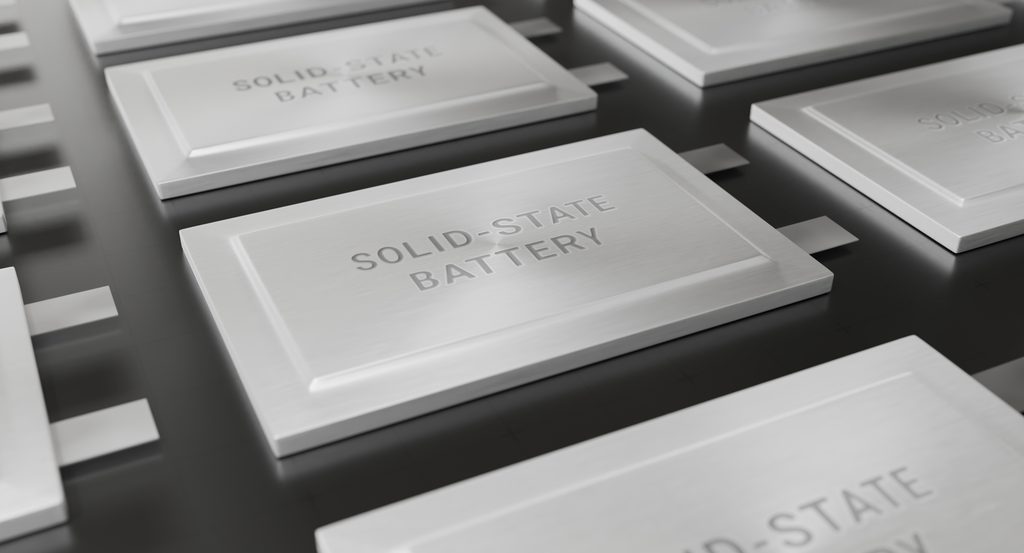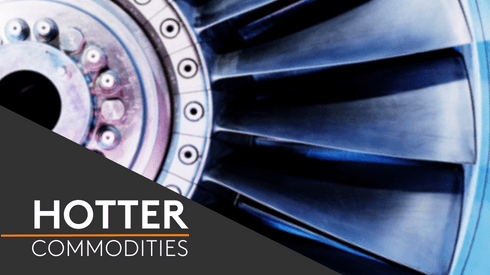The growth of electric vehicles (EVs) and sustainable energy storage has started to raise concerns about the future availability and cost of lithium. As the search for alternative battery chemistries intensifies, two contenders have emerged: solid-state and sodium-ion batteries. Promising improved performance and reduced reliance on scarce resources, these emerging technologies have sparked hope for the lithium supply crunch. We investigate whether they pose a viable opportunity and the challenges presented.
In this article we will look at:
- What solid-state batteries are and how they differ from traditional lithium-ion cells
- What opportunities solid-state batteries offer the electric vehicle (EV) industry
- The effect of solid-state cells on lithium supply and demand
- Sodium-ion cells and other emerging battery technologies
What are solid-state cells?
Solid-state cells replace the liquid electrolyte and the polymer separator in traditional lithium-ion (Li-ion) cells with a solid electrolyte between the anode and cathode. There are many materials being researched and these can broadly be categorized into three groups: Inorganic Solid Electrolytes (ISE), including ceramics such as oxides and sulfides, Solid Polymer Electrolytes (SPE) or Organic Electrolytes and Composite Polymer Electrolytes (CPE).
Traditional nickel, cobalt, manganese (NCM) cathodes can be used alongside silicon-rich graphite for the anode. However, the ultimate goal is to use a pure lithium-metal anode, which is only feasible with a solid electrolyte.

Why use solid-state electrolytes and what are the opportunities for the EV industry?
- Increased energy density: Graphite is completely replaced by the lithium-metal anode, therefore substantially reducing cell mass and volume. This then increases the overall cell energy density and allows for greater EV range
- Faster charging: Solid lithium deposition onto the anode current collector (or anode base layer) could potentially occur at a greater rate than Li-ion intercalation into a graphite anode structure on charging, allowing for faster charging times
- Enhanced safety: Solid-state cells replace the flammable solvents found in liquid-based Li-ion cells with more thermally stable solid electrolytes, therefore offering improved safety to passengers
- Longer lifespan: In traditional Li-ion cells, graphite reacts with the liquid electrolyte to form a solid electrolyte interphase (or SEI layer). Lithium is consumed here as the layer grows with every charge/discharge cycle, depleting the cell of lithium over time. The lack of graphite and the use of solid electrolytes in solid-state cells avoids this irreversible side reaction. Furthermore, the use of solid electrolytes can suppress lithium dendrite formation, another unwanted side reaction that affects cell lifetime and performance. Longer-lasting batteries would lower the cost of ownership for EVs and battery replacements and maintenance would become less frequent
- Lower cost (eventually): The lack of graphite avoids the manufacturing stream and costs associated with this material. Also, the cell formation process (an expensive end-of-production step related to the SEI layer in cell manufacturing) can be simplified. Additionally, the higher energy density allows for fewer cells per battery pack, and the improved safety of solid-state cells enables a simpler pack design
What are the challenges?
There are still many barriers to overcome before these promises are realized. Lithium dendrite formation in lithium-metal anodes, particularly under fast charge conditions, affects the lifetime of the cell. At present, solid electrolytes are not as conductive to lithium ions as their liquid counterparts, which affects both the power and energy of the cell. To perform effectively, solid-state cells require elevated temperatures and external pressure, which adds complexity to pack design. Finally, solid-state cells require high manufacturing precision and much technical innovation to enable cost-effective mass adoption.
What effect will solid-state batteries have on lithium demand?
Over the next ten years, half of annual battery gigawatt hour demand will come from battery electric vehicles (BEVs). Therefore, if solid-state batteries can be successfully developed and deployed at scale, they have the potential to have a significant impact on lithium supply and demand.
A solid-state cell with a lithium-metal anode will likely require a higher lithium material intensity (kg/kWh) than traditional Li-ion cells, despite the higher energy density of solid-state cells. However, it is important to note that lithium material intensity (kg/kWh) does not decrease proportionally with increased energy density (Wh/kg). It relies on many factors including overall lithium content, cell design and electrolyte conductivity.
Breakthroughs in solid-state research are regularly announced, the most recent coming from Toyota who plan mass production of solid-state cells for use in their EVs by 2027. However, most announcements are not accompanied with physical test data, making it difficult to accept any production timelines at face value.
Solid-state cells are still in the development phase and their commercialization and widespread adoption are yet to be realized. The uncertainty of what these cells will eventually look like and be composed of makes it difficult to model the material demand.
Are there any other alternative battery technologies entering the market?
Sodium-ion batteries have also garnered interest as a potential alternative to Li-ion batteries, with CATL-Chery and BYD both announcing EVs powered by sodium-ion batteries. Sodium is more abundant and less expensive than lithium, which could help mitigate supply chain constraints and reduce costs. sodium-ion is still in the early stages of development and faces technical challenges related to energy density, cycle life, and performance. Ongoing research is addressing these challenges whilst exploring the potential of sodium-ion as a viable alternative to lithium ferro-phosphate (LFP) for low-range EVs and micro-mobility and some energy storage system (ESS) applications.
However, it is worth mentioning that current Li-ion technology is continually advancing, for example, lithium manganese iron phosphate (LMFP), and will also play a significant role in shaping the future of the EV market. The demand for lithium does not look to be shifting significantly over the next few years. Battery innovation will progress incrementally rather than being disrupted.
Will sodium-ion batteries be taking over any time soon?
Predicting the exact trajectory of battery technologies is challenging as it depends on a variety of factors, including ongoing research and development, commercial viability, manufacturing scalability and market demand. Both lithium-metal solid-state and sodium-ion cells are promising candidates for next generation energy storage but their paths and timelines to adoption will differ.
While solid-state batteries hold significant potential, their actual impact on lithium supply and demand remains unclear and, as new technologies advance, so does the growth of lithium-ion batteries in the market.
Overall, the outlook for demand from EVs and ESS is so great that we expect there is room for numerous battery technologies, with each technology suiting different applications. Hover over the bars in the interactive chart below to see our predictions for passenger EV cell breakdowns out to 2033.
With the emerging technology of sodium-ion batteries entering the market, Fastmarkets are currently considering sodium-ion batteries in their long-term forecasts.
We expect sodium-ion to take 6% of the global passenger EV market by 2033 and 7% of the ESS market by 2033. Fastmarkets predicts that uptake of sodium-ion in EVs will be led by the Chinese market, as local carmakers including Chery, BYD and JAC are the only OEMs to have publicly announced models that will include sodium-ion cells.






